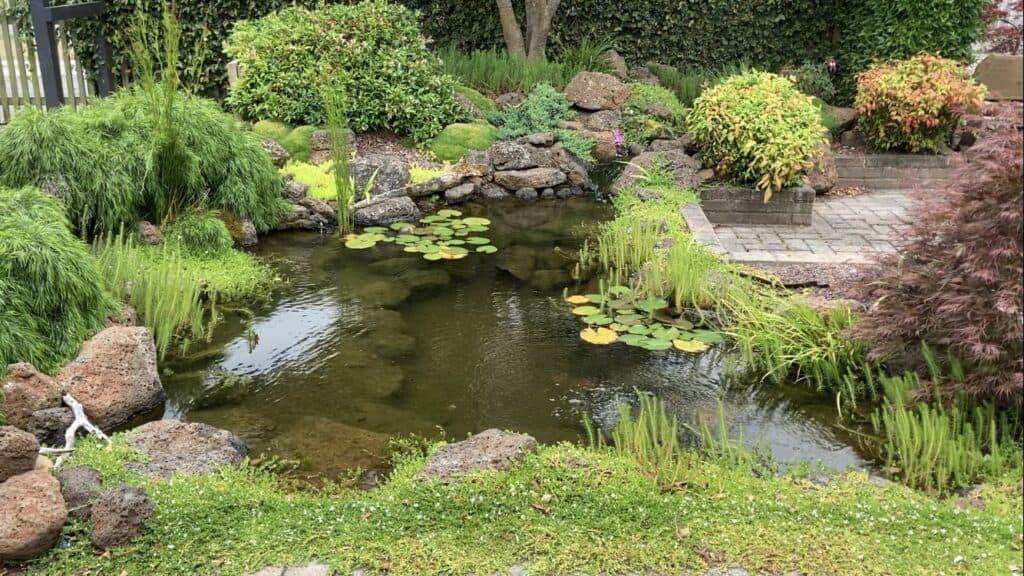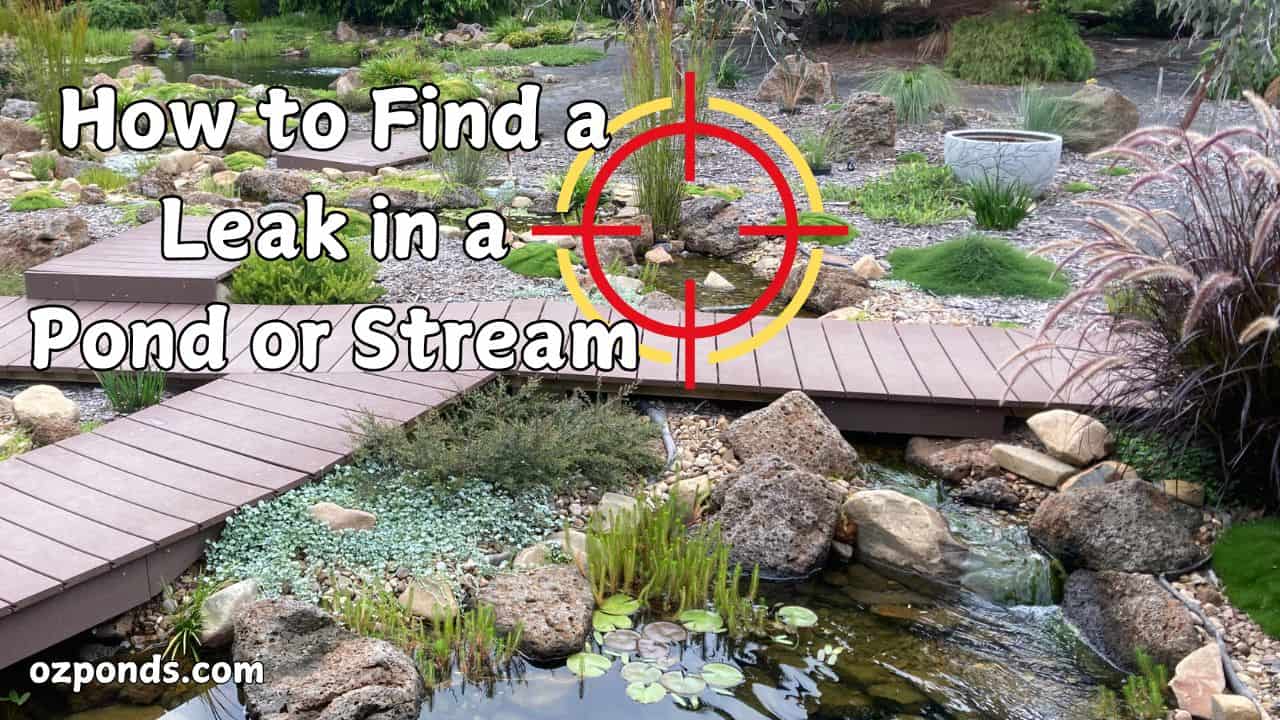Finding a leak in your pond can be a challenging task, but with a step-by-step approach, it’s manageable.
In this guide, I’ll walk you through the steps to pinpoint and address leaks effectively, ensuring your pond remains a beautiful and functional feature of your yard.
Step 1: Confirm It’s a Leak
Before diving into leak detection, rule out other causes of water loss. Evaporation is a common culprit, especially in hot weather or with ponds featuring streams, waterfalls, or other sources of splashing.
For more on evaporation, check out this article, there’s also a useful table showing how much evaporation is reasonable to expect, or if you prefer check out the video below.
Also, inspect your pond for overflow issues caused by blockages or obstructions. Ensure the liner edges and filter systems aren’t causing water to spill out.
Step 2: Begin the Investigation
If you’re sure it’s a leak, follow these steps:
- Check for Wet Spots
Look for damp areas around the pond, especially near the liner, waterfalls, or seams where liners are joined. - Turn Off Pumps Gradually
Shut off one pump at a time if your pond uses multiple pumps. This helps narrow down the location of the leak by isolating sections of the pond system.- Observe the water level for about a week. A shorter timeframe won’t give an accurate sense of water loss.
- Water loss should slow down when pumps are off since less movement means less potential for leaks.
- Set Up a Temporary Pond
If you have fish, consider creating a temporary pond. Fish can survive without filtration for short periods, especially if you’ve created a balanced ecosystem.
Step 3: Narrow Down the Leak Location
Here’s a systematic way to locate the problem:
- Streams and Plumbing
- If shutting off a pump stops the leak, the issue is likely in the stream or plumbing associated with that pump.
- Test each section of the plumbing and stream by running a temporary line from the pump to isolate the problem.
- Pond Itself
- If the leak persists after shutting off pumps, the problem may be in the pond.
- Let the water level drop until it stabilizes. The point where it stops is the area to inspect for holes or damage.
In this video I discuss how I would go about locating the leak:
Step 4: Inspect and Fix
- Check the Edges
The most common cause of leaks is a low liner edge where water escapes. Ensure all edges are high enough and free from obstructions or plant roots pulling down the liner. - Inspect the Liner
Look for spongy areas, bubbles, or mud seeping from the liner. These are signs of damage.- Fix holes using a patch kit designed for EPDM rubber liners (Amazon link) . It’s as simple as repairing a bike tire!
- Dismantle if Necessary
In rare cases, you might need to remove rocks or other features to locate and fix the problem.
In this video I show how simple it is to patch the EPDM rubber liner:
Common Causes of Water Loss
- Evaporation or Wicking
Plants and splashing can increase water loss. - Low Edges or Settling
Liner edges may shift over time, causing leaks. - Pump Shut-Off Overflow
If your pond’s water volume wasn’t calculated correctly, shutting off the pump might cause overflow.
Prevention Tips
- Use quality materials like EPDM liners for durability.
- Consider adding non-woven geo-textile underlay to protect the liner, especially for larger ponds.
Conclusion
Finding a leak takes patience, but most issues—like low edges or blockages.
I hope this guide saves you time and frustration. If you found it helpful, share it with someone who might need it!
Thanks for reading!

Join my free email list
If you would like to join my free email list click the button below.
I promise I won’t spam you, I’ll only send information I think can help you save money building and maintaining a pond.

